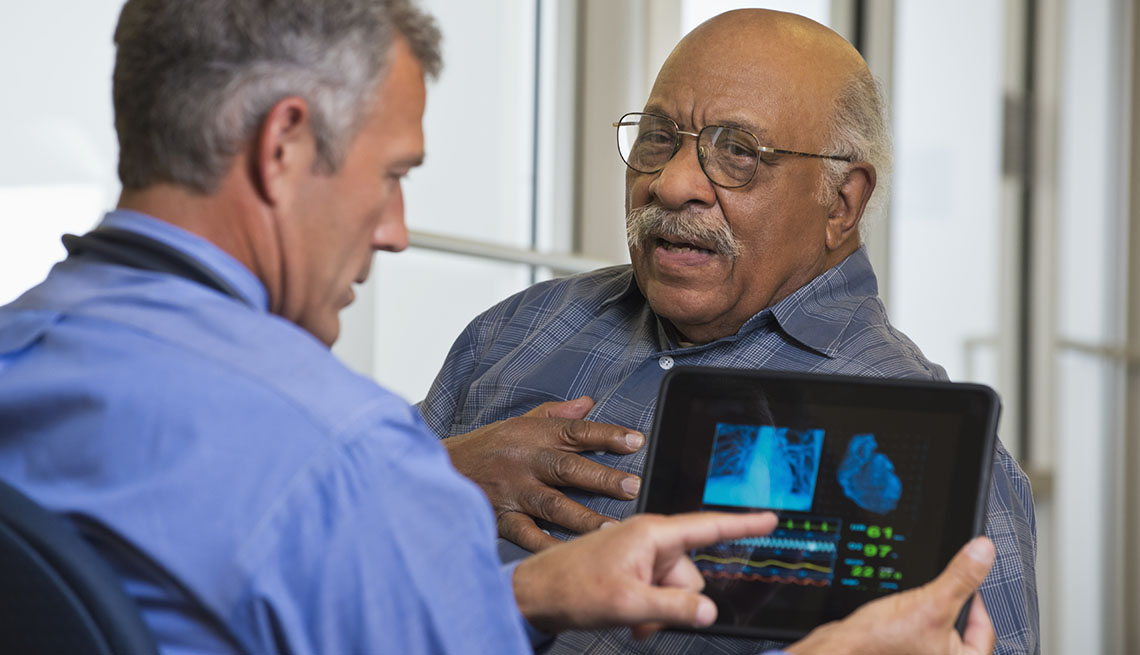What Exactly Is Aortic Stenosis?
Understanding a serious form of heart valve disease and how to treat it
It’s easy to shrug off fatigue as a byproduct of getting older. But if you find yourself slowing down because you lack the energy you once had, it might be related to how your heart is functioning. If you’re also experiencing shortness of breath and dizziness, pay attention. These symptoms may be your body’s way of sending you signals that something is wrong. You could have aortic stenosis.
What Is Aortic Stenosis?
Aortic stenosis, or AS, is one of the most common forms of heart valve disease, and it’s also the deadliest. AS happens when the aortic valve—one of four heart valves—hardens and narrows over time. This narrowing makes it more difficult for our hearts to pump blood to the rest of our bodies.
AS affects millions of people in the United States. It’s more common in those 65 and older. And, over the age of 75, up to 1 person out of 8 may be affected. AS is progressive, so if it goes undetected and without treatment, it will get worse over time. In fact, up to 50% of people with severe aortic stenosis may die within two years after symptoms begin if left untreated.1
Are You at Risk for Aortic Stenosis? Here’s What to Know
If you’re over 65, you are at greater risk for aortic stenosis, but there are other factors as well. Do you have a personal or family history of heart disease or heart valve disease, chronic kidney disease, or a history of chest radiation therapy? You’re also at risk for developing AS if you have cardiovascular risk factors, like high blood pressure, high cholesterol, or diabetes.
Symptoms can be subtle and sneak into activities you usually enjoy. Don’t ignore it if you’re out of breath after a short walk or don’t have the energy to do household chores. If you experience chest pain, a rapid or irregular heartbeat, lightheadedness, or dizziness, pay attention. Notice your feet or ankles are swelling? Any of these signs can point to aortic stenosis. Since AS can progress from mild to moderate to severe, the sooner you get diagnosed if you have AS, the sooner you can get treated and continue living life to the fullest.
How Is Aortic Stenosis Diagnosed and Treated?
There’s no risk in seeing your doctor—but there could be a risk in waiting. If you have any of the risk factors or symptoms we’ve talked about, schedule an appointment to determine if you need diagnostic testing. There are a number of tests that check for heart valve disease, but an echocardiogram is the standard. It’s a simple, accurate, and pain-free ultrasound of your heart performed in your doctor’s office. And it’s over in as little as 20 minutes.
Don’t wait for your annual checkup to discuss your concerns about aortic stenosis. Heart valve disease can’t be prevented, and it gets worse over time. The good news is there are effective ways to stay on top of AS. If you or a loved one are diagnosed, treatments include routine echocardiograms to help monitor and manage AS, open-heart surgery, and transcatheter procedures that don’t require an incision across your chest.
If you or someone you care about is experiencing symptoms, share this information with the treating doctor, including when the symptoms began. Ask for an echocardiogram to know for sure if you have AS. If you’re diagnosed with AS, talk to your doctor about the best treatment plan. With the right information in hand, you can be your own best advocate or an advocate for someone you love.
Click here to download a free discussion guide for your next doctor’s visit.
1Otto CM. Timing of aortic valve surgery. Heart. 2000;84(2):211-8. PP--US-7110 v1.0
Edwards, Edwards Lifesciences, and REACH FOR THE HEART are trademarks or service marks of Edwards Lifesciences Corporation. All other trademarks are the property of their respective owners.
PP--US-7110 v2.0




